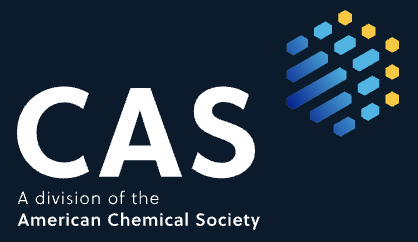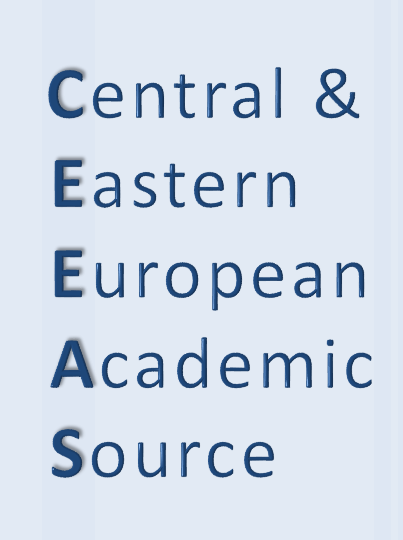Quick Search
Volume: 7 Issue: 1 - 2015
| RESEARCH ARTICLE | |
| 1. | Prognostıc Factors for Successful Outcome in Patients Undergoing Controlled Ovarian Stimulation and İntrauterine İnsemination Sinan Erdoğan, Ebru Çöğendez, Meryem Eken, Betül Keyif, Burcu Erdoğan, Erdal Kaya doi: 10.5222/iksst.2015.001 Pages 1 - 7 OBJECTIVE: The aim of this study is to determine the factors affecting pregnancy rates in the patients undergoing controlled ovarian hyperstimulation(COH)- intrauterine insemination (IUI) and criterias of patient selection for COH/IUI. METHODS: 328 couples who underwent 596 IUI cycles and admitted to Zeynep Kamil Training and Research Hospital infertility clinic between January 2011 – November 2011, and had inclusion criteria, were evaluated retrospectively. Clinical pregnancy diagnosis was made on 14th day of IUI for patients with positive β-hcg after observing gestational sac in the ultrasound scans. The results of clinical pregnancy(+) and clinical pregnancy (-) groups were compared. RESULTS: After treatment sixty-five patients became pregnant.The pregnancy rates were 10.9% per cycle and 19.8% per couple.Compared with non-pregnant cycles, the age of the women <30, endometrium thickness > 8mm on HCG day, infertility period ≤3 years, antral follicule count >4, preovulatuar follicule count ≥2and number of follicles greater than 16 mm in diameter and total motile sperm count >20 million/ml were significantly higher for pregnancy rates. Duration of infertility was significantly shorter for pregnant cycles. The sperm concentration and number of motile spermatozoa were also significantly increased in pregnant cycles. Data was compared between groups which resulted with clinical pregnancy and not. CONCLUSION: Duration of infertility and number of follicles greater than 16 mm in diameter, total motile sperm count had the maximum power to predict pregnancy following ovarian stimulation and intrauterine insemination |
| 2. | Evaluation of the association between the dark amniotik fluid detected in genetic amniocentesis and related perinatal outcome İbrahim Polat, Ali Ekiz, Başak Kaya, Deniz Kanber Açar, Melih Bestel, Salim Sezer, Selin Dikmen, Gökhan Yıldırım doi: 10.5222/iksst.2015.008 Pages 8 - 12 OBJECTIVE: In this retrospective study, we aimed to evaluate the association between dark amniotic fluid detected in the genetic amniocenthesis and perinatal outcome and karyotype results. METHODS: Genetic amniocentesis records which perfomed in Kanuni Sultan Suleyman Education and Research Hospital, Department of Maternal Fetal Medicine, between July 2012 and April 2014 were obtained from hospital medical records. Twenty-five cases were evaluated in terms of karyotype results and perinatal outcome. RESULTS: 838 genetic amniocentesis procedure were performed during this 22 months period In our clinic dark amniotic fluid was detected in 25 (%2.98) cases. The amniocentesis indication for 15 patient was increased risk in the prenatal screening whereas 10 of them had major fetal anomalies in ultrasound evaluation. Medical termination was performed in 6 patients who detected major ultrasonographic anomaly and only one of them ended up with alive baby. One of the patients who had risk in her screening tests had an abortion an done of the patients had PPROM at 30th week of gestation. None of the other patients had any other pregnancy complications. CONCLUSION: Bleeding at the early phase of pregnancy is thought to be the reason of dark amniotic fluid during amniocentesis but the actual etiology is still unknown and it is controversial that it has negative association on pregnancy outcomes and karyotype results. |
| 3. | Evaluation of hepatitis B and hepatitis C frequency in patients with chronic urticaria Ayşe İnci, Aslı Günaydın doi: 10.5222/iksst.2015.013 Pages 13 - 16 OBJECTIVE: The relationship between chronic urticaria and hepatitis known for many years. In this study our aim is to evaluate the prevalence of hepatitis B, hepatitis C in patients admitted to our hospital with chronic urticaria. METHODS: Fifty-six patients who admitted to our dermatology polyclinic with chronic urticaria between May 2012 – May 2013 enrolled to study. The outcomes of HBsAg, anti-HBs, anti-HCV evaluated retrospectively. RESULTS: Thirty four ( 60,7%) patients were women, twenty two (39,3%) were men. The average age was 39,62 ±15,12. Two patients (3,6 %) were positive for HBsAg, twenty one patients (37,5 %) were positive for Anti-HBs. None of the patients were positive for Anti-HCV. CONCLUSION: Consequently, in our studty incidence of hepatitis B and hepatitis C with chronic urticaria were similar compared to normal population. |
| 4. | The effects of early gestational transvaginal ultrasonography signs on prognosis of pregnancy. Mehmet Bayrak, Cihan Karadağ, Sinem Demircan, Burcu Yılmaz doi: 10.5222/iksst.2015.017 Pages 17 - 21 OBJECTIVE: This study is conducted to assess the effects of early gestational transvaginal ultrasonography on prognosis of pregnancy. METHODS: This prospective study is planned with 174 patients who have no chronical disease, no habituel abortus anamnesis and a normal gestational singleton sac sonographically. Patients were evaluated in the 5th-6th and 7th-8th weeks. The gestational sac diameter, yolc sac diameter (mm), morphology and calcifications were scanned. CRL was measured by its longest axis. Fetal heart rate was asessed by beats per minute. RESULTS: The mean gestational sac diameter in the 5th-6th weeks was found to be 12.1±3.9mm in live fetuses and 14±5mm in abortion cases (p: 0.827). when it came to 7th-8th weeks the mean diameter was 17.8±5.7 in non abortion cases and 18±5.4 in abortion cases (p: 0.827). The first group non-abortion cases had mean yolc sac diameters of 3.1±0.9mm and the abortion cases had 4.1±1.0mm (p: 0.003). The second group’s non abortion cases had mean yolc sac diameters of 4.3±1.0mm and abortion cases had 4.6±1.3mm (p: 0.763). 4 cases had yolc sac calcifications. 3 of these cases resulted in abortion. The second group non abortion cases had a mean fetal heart rate of 114±22 beats/min and the abortion cases’ fetal heart rate mean value was 95±19 beats/min (p: 0.03). 2 cases in the second group had a GS-CRL≤5mm (p: 0.02). CONCLUSION: In our study yolc sac diameter and morphology give an idea about the pregnancy prognosis in 5th-6th weeks while the gestational sac diameter did not come out to be such effective. The fetal heart rate (<80) only was found to affect the prognosis on the 7th-8th gestational weeks. GSD-CRL difference smaller than 5 mm is a predictor in poorly diagnosed gestations. |
| 5. | HBsAg, Anti-HBs and Anti-HCV Seroprevalence of the Patients Who Admitted To A Training And Research Hospital In Istanbul Ayşe İnci, Erdinç Çavuş, Feridun Dardeh, Cemal Kazezoğlu, Kamuran Şanlı, Özgür Yanılmaz doi: 10.5222/iksst.2015.022 Pages 22 - 25 OBJECTIVE: Hepatitis B virus (HBV) and hepatitis C virus (HCV) infections area worldwide health problem which may result in cirrhosis and hepatocellular carcinoma.The aim of this study was to investigate seropositivity of HBsAg, Anti-HBs and Anti-HCV in the patients who were admitted to Kanuni Sultan Suleyman Education and Research Hospital between September 2013 and September 2014. METHODS: Blood samples from the patients are analysed in using microELISA (Tecan). RESULTS: Serologically 22351 patients are tested for HBsAg,21054 patients are tested for Anti-HBs,19070 patients are tested for Anti-HCV. In our study 4.05%,38.42%, and 0.66% of the patients are tested are found to be seropositive for HBsAg, Anti-HBs and Anti-HCV respectively. CONCLUSION: The results detected for seropositivity in our hospital are similar to those found in other regions of Turkey. |
| 6. | Evaluation of scientific production in robot assisted radical prostatectomy Fuat Ernis Su, Enver Özdemir doi: 10.5222/iksst.2015.026 Pages 26 - 30 OBJECTIVE: Bibliometric studies can be used for following the scientific contribution of researchers of countries to the international literature. The aim of our present study is to evaluate scientific studies in the field of robot-assisted prostatectomy by using the bibliometric analysis method, and to discuss the place of our country in this area. Our study is the first bibliometric study carried out in this field as up to now. METHODS: The analysis of the present study were performed by using WoS Core Collection® software in July 2014. All papers published included in SCI-E TM in English literature between 2000 and 2014 were searched by using key words of ‘‘robot assisted prostatectomy’’, ‘‘robot assisted radical prostatectomy’’, ‘‘robotic prostatectomy’’, ‘‘robotic radical prostatectomy’’, ‘‘robotically assisted radical prostatectomy’’. All other papers out of research articles were excluded from the study. Furthermore these results were analyzed in terms of countries, numbers of publications in years, authors and journals. RESULTS: A total of 567 articles were found matching the search criteria. While The United States ranked first with 408 articles, Turkey ranked sixteenth with 6 articles. CONCLUSION: Our results demonstrates that despite the rapidly increasing number of robotic surgery center in our country in recent years, the scientific productivity has not been increased. We believe that the researchers interested in this field in our country should have done more contribution to the international literature. |
| CASE REPORT | |
| 7. | Spontaneous Pneumomediastinum As a Rare Etiology of Chest Pain in Children: A case report Gonca Keskindemirci, Nuray Aktay Ayaz, Ayşe Zopçuk, Helen Bornaun, Ali Er, Gönül Aydoğan, Kazım Öztarhan doi: 10.5222/iksst.2015.031 Pages 31 - 33 Spontaneous pneumomediastinum (SPM) is a case of presence of air within the mediastinum that more common in young men, and mostly it is self limiting. The most common symptom (80-90%) is chest pain, and it is localized in the substernal region. SPM usually resolves spontaneously within 24-36 hours and persistence is at least 48 hours. Repetition is very rare. We presented the case of SPM diagnosed with radiologic evaluation. And it was reported to point out the differential diagnosis of chest pain in the emergency unit and SPM that is one of the etiology of severe chest pain. |
| 8. | Successfully Treated Rapidly Progressive Glomerulonephritis Due To Anca Related Necrotizing Vasculitis Developed In A Patient With Asthma At Later Course Melek Yalçın, Cüneyt Akgöl, Taner Baştürk, Mustafa Sevinç, Yener Koç, Elbis Ahbap, Tamer Sakacı, Tuncay Şahutoğlu, Mehmet Yavuz Gürler, Abdulkadir Ünsal doi: 10.5222/iksst.2015.034 Pages 34 - 37 Churg Strauss syndrome is a systemic, necrotizing vasculitis and it is the least common one among ANCA associated vasculitis. The American Collage of Rheumatology classification criteria patients having at least four of astma, eosinophilia(>10%), pulmonary infiltrates, mono-polyneuropathy, paranasal sinus abnormalities, extravasculary eosinophils on biopsy can be diagnosed as Churg Strauss syndrome. Asthma, migrating pulmonary infiltrates are seen in pulmonary involvement. Leukotrien receptor antagonists may also induce secondary vasculitis. Therefore, diagnosis of Churg Strauss syndrome in patients with asthma who are on treatment of such drugs is a challenge. Cresentic glomerulonephritis is seen rarely. It is treated with immunosupressive agents. In this case, we presented a case with Churg Strauss syndrome developed concomitant to montelukast treatment for asthma, presented as rapidly progressive glomerulonephritis and treated successfully. |
| 9. | Pulmoner Embolism Due To Hyperhomocysteinemia: Case Report Eyyüp Çavdar, Raif Coşkun, Ayşe Fadıloğlu, Ömür Tabak, Mehmet Hurşitoğlu, Zeliha Senem Bes doi: 10.5222/iksst.2015.038 Pages 38 - 40 In this study we presented a 24 years old male with pulmoner embolism who was hospitalized and followed in Istanbul Kanuni Sultan Suleyman Training and Research Hospital. He was complaining of shortness of breath and chest pain that started 3 days ago. Because of high levels of D-dimer, torax computed tomography performed and pulmoner embolism was revealed. We hospitalized him and treated with enoksaparin. Homocystein levels was found high in laboratory tests (etiologic researcies). Although pulmoner embolism is a frequent emergency with variety of clinical symptomps and signs which can be quite mortal sometimes it is difficult to diagnose it. There are various causes of pulmoner embolism. Hyperhomocysteinemia is a rare cause of pulmoner embolism but it should be kept in mind because of its clinical importance. |
| 10. | The safety of ileo-ileal anastomosis near ileocecal valve.A case report and review of the literature Bülent Kaya, Orhan Bat, Hamit Kafkas Celik, Aysun Tunca, Ali Ismet Tekirdağ, Aziz Şener doi: 10.5222/iksst.2015.041 Pages 41 - 43 The ileo-ileal anastomosis near ileocecal valva after resection of ileum due to different surgical pathologies was accepted as a risky procedure.A 18 years old female was operated due to a tumoral lesion originated from terminal ileum. Segmental small bowel resection and ileo-ileal anastomosis near 1-2 cm to ileo-cecal valve was performed.There was no problem after surgery.In this study we aimed to present this subject which was not discussed so much in literature. |
| 11. | Management of pregnancy affected by Kell Alloimmunization; case report Ali Ekiz, Deniz Kanber Açar, Halil Aslan, Ahmet Gül, Gökhan Yıldırım, Melih Bestel doi: 10.5222/iksst.2015.046 Pages 44 - 46 Hemolytic disease of the fetus and newborn (HDFN), is a condition in which newborn's or fetus' erythrocytes are destroyed by maternally derived antibodies. The most common type is the Rh (D) alloimmunization. The incidence of Kell alloimmunization during pregnancy is between 0,1% - 0,3%. The mostly encountered minor blood type antibodies are produced against Kell type. In this case report, a subject with a history of 3 pregnancy losses is being reported, which had 2 times of intrauterine transfusions and ended with successful labor at 35th gestational week. |






















